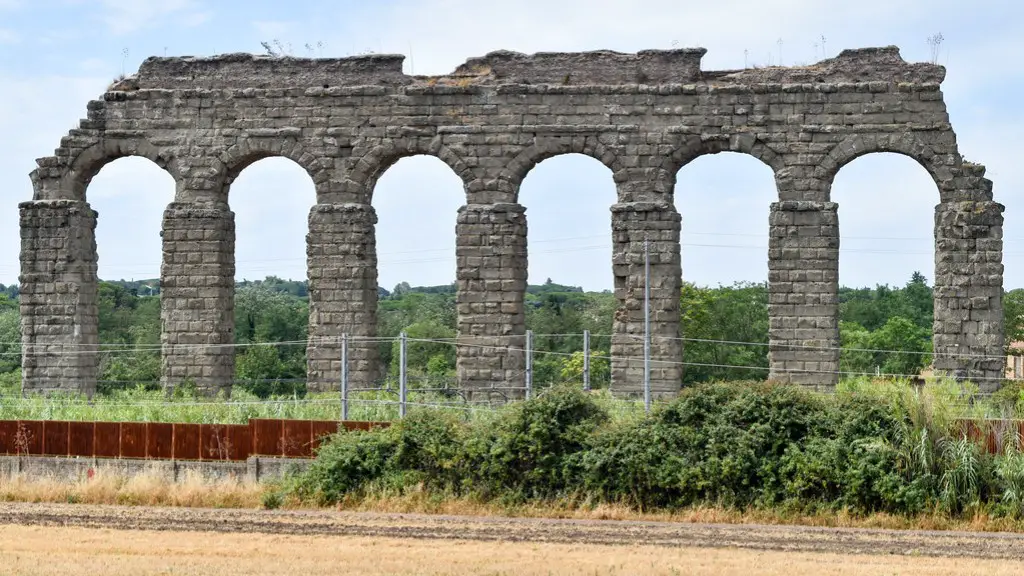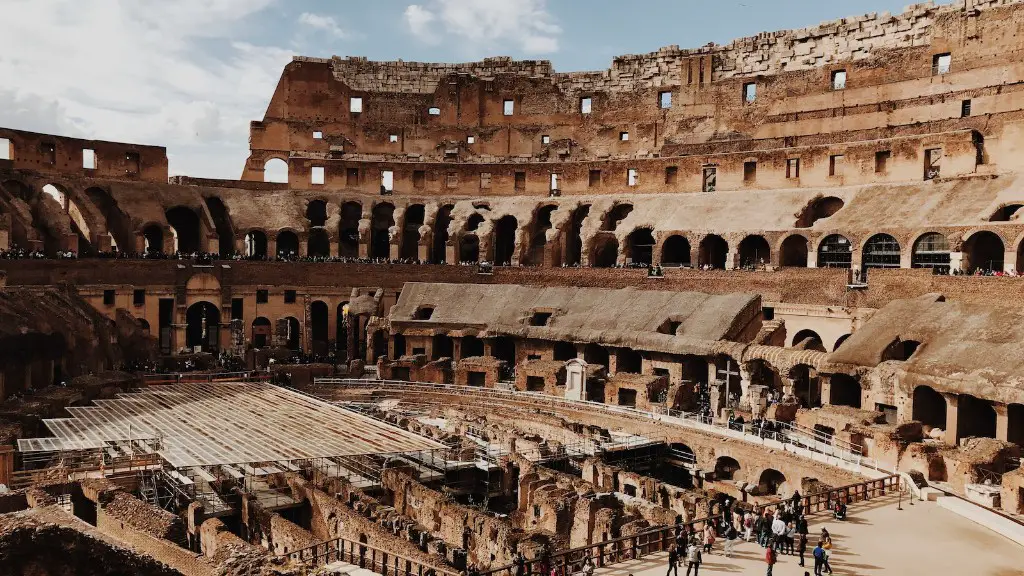Economic and Social Aspects
Ancient Rome was one of the greatest empires of the ancient world. With its great feats of engineering, monumental architecture, and contributions to the development of law, politics, and culture, Ancient Rome left a lasting impression on the modern world. Students entering university often have a rudimentary existing knowledge of Ancient Rome’s impressive accomplishments, but there is much more to the history and story of this mighty empire.
Economically, Ancient Rome was largely dependent upon the aqueducts that supplied its immense population with freshwater, as well as other infrastructure such as roads, bridges, and public buildings. Its trade was heavily reliant upon the military conquest and subsequent exploitation of conquered land that had become part of the Roman Empire. In addition to its strategic conquests, it also had an extraordinary tax system that provided a steady source of revenue. Furthermore, Ancient Rome had a currency system with coins denominated in Latin, and a strong merchant class that drove a diversified economy.
Socially, Ancient Rome was home to a complex network of classes and status was largely based on one’s family or social connections. Slavery was also an integral part of the empire, with slaves even having the possibility of freedom if their owner’s wishes were met. Additionally, Ancient Rome was known for its impressive public spectacles, including gladiatorial games, chariot races, and theatrical performances, which provided entertainment for the masses. Finally, religion was an important part of Ancient Rome, with the all-powerful Senate responsible for the allocation of religious funds and festivals meant to ensure the gods kept an eye on their empire, influencing the class system and warfare.
Art and Education
When it comes to art, Ancient Rome was renowned for its grand architectural feats, such as the Colosseum, Pantheon, and Forum, but it was also known for its impressive sculptures, mosaics, and even frescoes. Students of Ancient Rome must not overlook this artistic tradition, which encompassed a wide array of mediums, from beautiful statues to intricate wall mosaics and dazzling frescoes meant to bring life to the ceilings and walls of homes.
Education was an essential part of Roman life. Those with the wealth, status, and social connections could study rhetoric, grammar, philosophy, and mathematics. On the other hand, those who could not afford to attend a formal school had the opportunity to educate themselves in other ways. Libraries, often open to members of the public, were stocked with copies of works written by renowned authors, scholars, and politicians. They gave the people access to a diverse selection of literature and information.
Additionally, Ancient Roman society also had a strong emphasis on physical education, including activities such as running and wrestling. These exercises and games developed both physical and mental resilience, allowing the Romans to become a fiercely competitive empire.
Military and Legal Contributions
The formidable Roman military was one of the most efficient of its time. It was an evolving machine that encompassed the traditional warring tactics used by the Romans, adapted to their ever-changing environment. The military used a system of recruitment, conscription, and training to form an army of professional soldiers and well-trained auxiliaries.
Ancient Rome also made immense contributions to the development of law. Its legal system was based on the belief that justice should be administered fairly and equally to all citizens, regardless of their social class. It was a sophisticated system of spoken laws, court proceedings, and written documents, meant to ensure the safety and security of Roman citizens. These laws were so far-reaching, they spread throughout Europe which is why Roman law is still used in many countries today.
Social Changes and Decline
In the mid-second century, Rome started to experience a period of social change. Populations of some cities grew and many rural areas began to be depopulated. This led to a shift in political positions and the rise of the wealthy classes as they became more prominent within the empire. This increased social stratification led to the weakening of the army and the growth of Christianity, which became a powerful force in Ancient Rome.
The empire reached its greatest territorial force during the reign of Octavian, and soon thereafter, the reign of Augustus began. Augustus’ reign brought about a period of peace and stability, but it was also the beginning of the slow decline of the Roman Empire. As it lost territories and influence, it was also plagued by internal turmoil, including peasant uprisings, economic turmoil, and luxurious lifestyles that led to its financial depletion. The empire continued to decline until its eventual fall in 476 CE.
Conclusion
Understanding the legacy of Ancient Rome is crucial for any student of history. Students have a basic knowledge of the incredible feats of engineering and architecture, but they must also appreciate the diverse and unique aspects of the empire and its people. From its economic, social, and legal contributions, to its art, education, and military strengths, a holistic study of Ancient Rome reveals a complex and layered history.


